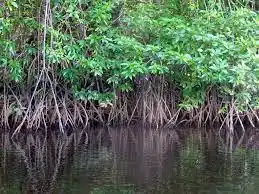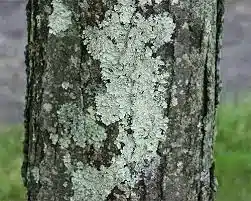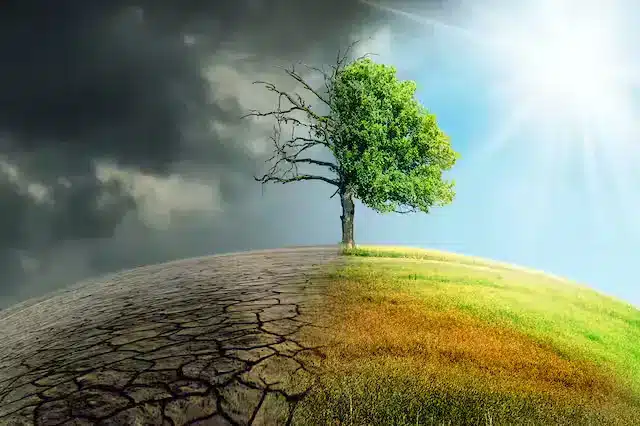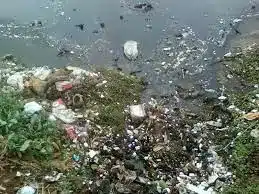Definition of Carbon sequestration
Carbon sequestration is the process of capturing and storing carbon dioxide from the atmosphere.
- Carbon dioxide is a heat-trapping gas produced both in nature and by human activities.
- Man-made sources of carbon dioxide come from the burning of fossil fuels such as coal, natural gas and oil for uses in power generation and transportation.
- Carbon dioxide is also released through land-use changes, biologically through oceans, the decomposition of organic matter and forest fires.
- The build-up of carbon dioxide and other greenhouse gases in the atmosphere can trap heat and contribute to climate change.
Carbon Sequestration is the long-term storage of carbon in plants, soils, geologic formations, and the ocean, which can occur both naturally and as a result of anthropogenic activities.
- The idea is to stabilize carbon in solid and dissolved forms so that it doesn’t cause the atmosphere to warm.
- It is one method of reducing the amount of carbon dioxide in the atmosphere with the goal of reducing global climate change.
- There are two main types of carbon sequestration: biological and geological.
Need for Carbon Sequestration:
- As Global Warming accelerates and society continues to emit greenhouse gases, the idea is gaining of investing in artificial techniques of Carbon Sequestration.
- According to the Intergovernmental Panel on Climate Change, nations may need to remove between 100 billion and 1 trillion tonnes of carbon dioxide from the atmosphere this century to avert the worst effects of climate change, far more than can be absorbed by simply planting more trees.
Types of Carbon Sequestration
Natural Carbon Sequestration:
- It is the process by which nature has achieved a balance of carbon dioxide in our atmosphere suitable for sustaining life. Animals expel carbon dioxide, as do plants during the night.
- Nature provided trees, the oceans, earth and the animals themselves as carbon sinks, or sponges. All organic life on this planet is carbon based and when plants and animals die, much of the carbon goes back into the ground where it has little impact on contributing to global warming.
- Terrestrial carbon sequestration is the process through which CO2 from the atmosphere is absorbed by trees and plants through photosynthesis and stored as carbon in soils and biomass (tree trunks, branches, foliage, and roots).
Artificial Carbon Sequestration:
- Artificial carbon sequestration refers to a number of processes whereby carbon emissions are captured at the point of production (e.g. Factory Chimneys) and then buried.
- One proposed method is ocean sequestration whereby carbon dioxide is injected deep into the ocean, forming lakes of CO2. In theory, the CO2 will stay down deep due to the pressure and temperature of the surrounding water, gradually dissolving into that water over time.
- Another example is geological sequestration where the carbon dioxide is pumped into underground chambers such as old oil reservoirs, aquifers and coal seams that are unable to be mined.
How Is Carbon Sequestration Done?
Natural Methods:
Oceans
- Oceans absorb roughly 25 percent of carbon dioxide emitted from human activities annually.
- Carbon goes in both directions in the ocean. When carbon dioxide releases into the atmosphere from the ocean, it creates what is called a positive atmospheric flux. A negative flux refers to the ocean absorbing carbon dioxide. Think of these fluxes as an inhale and an exhale, where the net effect of these opposing directions determines the overall effect.
- Colder and nutrient-rich parts of the ocean are able to absorb more carbon dioxide than warmer parts. Therefore, the polar regions typically serve as carbon sinks. By 2100, most of the global ocean is expected to be made up of carbon dioxide, potentially altering the ocean chemistry and lowering the pH of the water, making it more acidic.
Soil
- Carbon is sequestered in soil by plants through photosynthesis and can be stored as soil organic carbon (SOC). Agroecosystems can degrade and deplete the SOC levels but this carbon deficit opens up the opportunity to store carbon through new land management practices. Soil can also store carbon as carbonates. Such carbonates are created over thousands of years when carbon dioxide dissolves in water and percolates the soil, combining with calcium and magnesium minerals, forming “caliche” in desert and arid soil.
- Carbonates are inorganic and have the ability to store carbon for more than 70,000 years, while soil organic matter typically stores carbon for several decades. Scientists are working on ways to accelerate the carbonate forming process by adding finely crushed silicates to the soil in order to store carbon for longer periods of time.
Forests
- About 25 percent of global carbon emissions are captured by plant-rich landscapes such as forests, grasslands and rangelands. When leaves and branches fall off plants or when plants die, the carbon stored either released into the atmosphere or is transferred into the soil. Wildfires and human activities like deforestation can contribute to the diminishment of forests as a carbon sink.
Grasslands
- While forests are commonly credited as important carbon sinks, California’s majestic green giants are serving more as carbon sources due to rising temperatures and impact of drought and wildfires in recent years. Grasslands and rangelands are more reliable than forests in modern-day California mainly because they don’t get hit as hard as forests by droughts and wildfires, according to research from the University of California, Davis. Unlike trees, grasslands sequester most of their carbon underground. When they burn, the carbon stays fixed in the roots and soil instead of in leaves and woody biomass. Forests have the ability to store more carbon, but in unstable conditions due to climate change, grasslands stand more resilient.
Geological Carbon Sequestration
- Geological carbon sequestration is the process of storing carbon dioxide in underground geologic formations or rocks. Typically, carbon dioxide is captured from an industrial source, such as steel or cement production, or an energy-related source, such as a power plant or natural gas processing facility and injected into porous rocks for long-term storage.
- Carbon capture and storage can allow the use of fossil fuels until another energy source is introduced on a large scale.
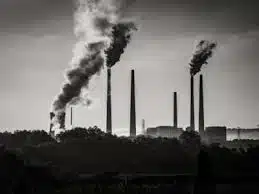
Technological Methods:
Geologic Carbon Sequestration:
- CO2 can be stored, including oil reservoirs, gas reservoirs, unmineable coal seams, saline formations and shale formations with high organic content.
Ocean Carbon Sequestration:
- Oceans absorb, release and store large amounts of CO2 from the atmosphere. This can be done in two ways- enhancing productivity of ocean biological systems through Iron fertilization, and injecting CO2 into the deep ocean.
- The dumping of iron stimulates phytoplankton production, which in turn leads to enhanced photosynthesis from these microorganisms, helping in CO2 absorption.
Graphene Production
The use of carbon dioxide as a raw material to produce graphene, a technological material. Graphene is used to create screens for smart phones and other tech devices. Graphene production is limited to specific industries but is an example of how carbon dioxide can be used as a resource and a solution in reducing emissions from the atmosphere.
Direct Air Capture (DAC)
A means by which to capture carbon directly from the air using advanced technology plants. However, this process is energy intensive and expensive, ranging from $500-$800 per ton of carbon removed. While the techniques such as direct air capture can be effective, they are still too costly to implement on a mass scale.
Engineered Molecules
Scientists are engineering molecules that can change shape by creating new kinds of compounds capable of singling out and capturing carbon dioxide from the air. The engineered molecules act as a filter, only attracting the element it was engineered to seek
Advantages Of Carbon Sequestration
- Planting trees and managing their development is a proven way to reduce the number of harmful particulates in the air.
- Carbon sequestered is carbon not emitted into the atmosphere. Less carbon in the atmosphere will reduce the greenhouse gas effect and lessen the impacts of climate change.
- Carbon Sequestered can be helpful in achieving Net Zero Emission by 2050 (IPCC report)
Disadvantages Of Carbon Sequestration
- Carbon dioxide may be stored deep underground. At depth, hydrostatic pressure acts to keep it in a liquid state. Reservoir design faults, rock fissures, and tectonic processes may act to release the gas stored into the ocean or atmosphere.
- The use of the technology would add 1–5 cents of cost per kilowatt-hour, according to an estimate made by the panels about climate change. The financial costs of modern coal technology would nearly double if the use of CCS technology were to be required by regulation. The cost of CCS technology differs from the different types of capture technologies being used and with the different sites that it is implemented in, but the costs tend to increase with CCS capture implementation. One study conducted predicted that with new technologies these costs could be lowered but would remain slightly higher than prices without CCS technologies.
Underlying Challenges:
Carbon which is stored in the deep underground. Due to any tectonic activities or rock fissures, gas may again leak into the atmosphere.
- Lack of technology:
- A growing number of corporations are pouring money into so-called engineered carbon removal techniques.
- However, these technologies are at a nascent stage and need an overhaul to be exploited.
- High Cost:
- Carbon removal technologies remain too expensive for widespread use.
- Artificial carbon sequestration is costly, energy intensive, relatively untested and has no other side benefits.
- Environmental Concerns:
- Carbon dioxide may be stored deep underground. Reservoir design faults, rock fissures, and tectonic processes may act to release the gas stored into the ocean or atmosphere leading to unintended consequences such as ocean acidification etc.
Impacts of Carbon Sequestration
According to the Paris Climate Accord, the members who ratified the deal has to work towards the goal of achieving net-zero emissions, which is crucial to limit global warming. This scenario, calls for rapid scale-up of carbon capture, use and storage (CCUS). The process involves capturing CO2 emissions from coal and gas power plants, and from heavy industry, for deep underground storage or re-use.
- About 25 percent of our carbon emissions have historically been captured by Earth’s forests, farms and grasslands. Scientists and land managers are working to keep landscapes vegetated and soil hydrated for plants to grow and sequester carbon.
- As much as 30 percent of the carbon dioxide we emit from burning fossils fuels is absorbed by the upper layer of the ocean. But this raises the water’s acidity, and ocean acidification makes it harder for marine animals to build their shells. Scientists and the fishing industry are taking proactive steps to monitor the changes from carbon sequestration and adapt fishing practices.
Conclusion
- Thus, Carbon Sequestration is a viable option for global leaders to achieve Net zero-emission by 2050 as asserted in the IPCC Report, to protect the planet from rising temperature greater than 2°C.
The need is a serious global co-operation and co-ordination for feasible technology development and affordable access to all, based on principles of Equity and Climate Justice.
Also refer :
- Environmental organizations of India
- Important MCQs On Air Pollution
- Important Multiple Choice Questions On Air Pollution

